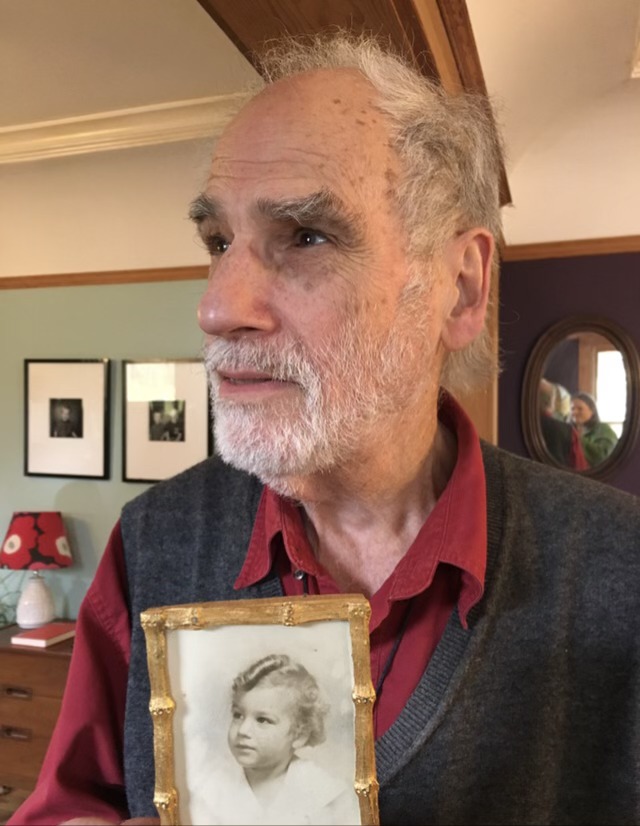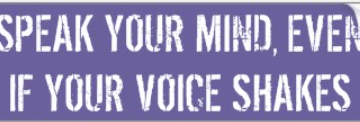The Easter Bunny Is Not Part Of The Compact
The following is a reprint from a previous column. Enjoy!
I was driving my ten-year-old son to school this morning. He took the opportunity of some back seat time to ruminate on life's big mysteries.
"How do people know the Easter bunny is a rabbit?"
To which I answered,
"I don't know."
(This, technically is true. As I don't know how Easter became a holiday about a rabbit with eggs.)
"I know he's not you, because I got a note with a drawing on it once."
(The boy has a point, as I am kind of a crappy artist.)
"How do you know that drawing wasn't done by someone else?"
Silence.
"Well, I know you're not the Easter bunny, because my toys always comes in their packaging!"
So there you go. The set-in-stone logic of a child. Mom is part of The Compact, and only buys used, so she can't possibly be the Easter bunny.
Game. Set. Match.
Any more of life's great mysteries to be solved? 'Cause I'm on a roll.
Katy Wolk-Stanley
"Use it up, wear it out, make it do or do without."




Now THAT is fabulous!
I think my oldest son was three or four before he knew toys could be purchased at a store and not just from someone's yard....
LOL! That's awesome!
In case you're still wondering...
Easter, like Christmas and Halloween, is full of pagan symbolism that people kept when the early church Christianized pagan holidays.
The rabbits and eggs go back to the originally pagan holiday of Easter which was a spring fertility festival. Even the name Easter is pagan in origin and may be derived from the name of a goddess.
Why rabbits and eggs? They are fertility symbols. Eggs are, I assume, rather obvious and rabbits reproduce like crazy. I think it's particularly ironic that we've combined the rabbit with that New World aphrodisiac, chocolate 😀
For this reason, some Christians do not celebrate Easter or even other holidays like Christmas.
Meg,
That was interesting. We celebrate Passover, and I had always thought that Easter has some connection with The Last Supper, which I also believed was Jesus celebrating Passover (he was Jewish - it was the ones after that created Christianity) - all our holidays usually have both an agricultural base as well as an historical base - so yes it's springtime, time of renewal, so we too have as one of our symbols on the Passover plate, an egg. Fortunately we don't do rabbits.
We also do gifts, but more in the form of keeping the kids interested in what's going on - so we have a game of hiding the afikoman (half of a matzo which must be used as a "dessert" and without which the Seder cannot be considered completed). Some families do it differently, some the father hides, some the kids - and a gift is promised for its return - looks like we've outgrown that (our youngest is 17) - only half-hearted attempt to play this year. And also fortunately, that is not the biggest part of our celebration.
Klara,
I didn't know that the egg is also a Passover symbol! How cool!
The Christianized Easter is mostly about the resurrection, though the Last Supper / Jesus' last Passover meal does play a part since that is the origin of the Eucharist -- very important if you happen to be Catholic.
The fact that pagan symbols of spring/fertility/renewal/etc. made their way into the Christian holiday shouldn't be a surprise since in it's own way Easter is very much about rebirth through the resurrection. In fact, many of the pagan spring festivals commemorated their own gods or heroes that died and rose from the dead, usually explaining the passing of the seasons.
I once went to a Unitarian Universalist service on Easter. I thought it was wonderful how they wove together Christian, Jewish, and Pagan traditions. The preacher talked about the resurrection of Jesus, the Passover, and also the Greek story of Persephone (which I think is interesting in that that underworld-and-back story involves a goddess instead of a male).
Rabbits and Bunnies: Rabbits are popular during Easter time because they are a reminder of spring and the new life that is abundant during springtime. They were the favorite animal of the spring goddess Eastre. The Easter bunny has its origin in pre-Christian fertility lore. The Hare and the Rabbit were the most fertile animals known and they served as symbols of the new life during the spring season.
The bunny as an Easter symbol seems to have its origins in Germany, where it was first mentioned in German writings in the 1500s. The first edible Easter bunnies were made in Germany during the early 1800s. These were made of pastry and sugar.
The German settlers who arrived in the Pennsylvania Dutch country during the 1700s introduced the Easter bunny to American folklore. The arrival of the "Oschter Haws" was considered childhood's greatest pleasure next to a visit from Christ-Kindel ("Christchild") on Christmas Eve. The children believed that if they were good the "Oschter Haws" would lay a nest of colored eggs. The children would build their nest in a secluded place in the home, the barn or the garden. Boys would use their caps and girls their bonnets to make the nests. The use of elaborate Easter baskets would come later as the tradition of the Easter bunny spread throughout the country.
Eggs: For many years people have used eggs to symbolize rebirth and abundant life. Throughout Europe it has been customary to give colored eggs to friends and family at Easter. Christians were forbidden to eat eggs during Lent. They were brought out in splendor on Easter Sunday. They had, in the early centuries of Christianity, been associated with the Resurrection of Jesus Christ.
In order to dye red and golden eggs, one boiled them with red or yellow onion skins. Other colors were obtained by boiling or soaking the eggs in various herbal concoctions. In other places the eggs were painted or covered with gold leaf. Today, of course, we also have candy eggs. Whatever our custom, eggs serve to remind us of the abundant new life offered to us through the resurrection of Jesus.
So Bunny Rabbits because they were such a good symbol of fertility and Eggs because, well another sign of fertility but the early church could not eat eggs during lent so had an over abundance of eggs just in time for Easter!
The German and Amish legends were most likely rooted in European folklore about hares' eggs which seems to have been a confusion between hares raising their young at ground level and the finding of plovers' nests nearby, abandoned by the adult birds to distract predators. Hares use a hollow called a form rather than a burrow. Lapwings nest on the same sort of ground, and their nests look very similar to hare forms. So in the Spring, eggs would be found in what looked like hare forms, giving rise to the belief that the hare laid eggs in the spring.
Now try deciphering all this for your children to understand. It's all impossible. Consumer ads take this as a way of combining 2 simple signs of fertility in Spring and viola, the Easter Bunny delivering Eggs to all the children! Go figure.
Try explaining this...
I just happened on a book about the Easter Bunny that tells a good people/bunny story while mentioning only in passing that the (decorated or chocolate) egg delivery happens in the spring, when church bells are ringing and people say "Happy Easter" ~
The Story of the Easter Bunny by Katherine Tegen and Sally Anne Lambert. Very good for ages 3 to 5.
Priceless. He should be a scientist when he grows up. He's got the logic thing down cold.
I think that Easter didn't become about rabbits and eggs, it was the other way round. A festival about celebrating new life (with eggs and other fertility symbols) was then adopted by Christianity and used as Easter.
http://inventors.about.com/od/estartinventions/a/easter.htm
So now we know!
I miss these backseat ruminations...
My older son was THIRTY yesterday
We were once sitting at a stop light and he said, "MOM! I wonder how that little man in the stoplight runs up and down the stairs so fast."
Somehow or another, he thought the stoplights changed via a little man who ran up and down stairs inside the stoplight to change the colors.
(sigh) You're living the life Katy!
A cool book on origins of everything, including all the holiday traditions is, "Extraordinary Origins of Everyday Things".
Whereas our family does "celebrate" the meaning of Jesus' resurrection for mankind, we do not participate in any of the Easter traditions due, in fact, to their pagan origins.
Knowing where/how things came about has been, in general, a big catalyst for me in determining what I celebrate, eat, follow along with, etc. I'm not one to follow what everyone else does, especially concerning spiritual things and environmental issues. It's sometimes been unpopular with extended family and some others, but I do question just about everything.......